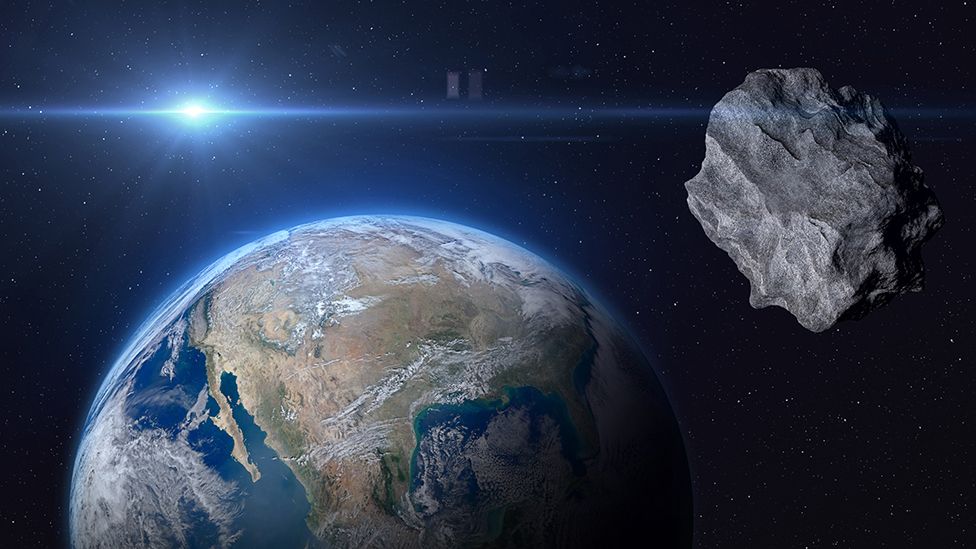ARTICLE AD BOX
 Image source, Getty Images
Image source, Getty Images
Artwork: The hunt is on for asteroids of all sizes
By Jonathan Amos
BBC Science Correspondent
You definitely shouldn't panic but there is a biggish asteroid about to pass by Earth in the coming hours.
About the size of a bus, the space rock, known as 2023 BU, will whip over the southern tip of South America just after midnight GMT.
With a closest expected approach of 3,600km (2,200 miles), it counts as a close shave.
And it illustrates how there are still asteroids of significant size lurking near Earth that remain to be detected.
This one was only picked up last weekend by amateur astronomer Gennadiy Borisov, who operates from Nauchnyi in Crimea, the peninsula that Russia seized from Ukraine in 2014.
Follow up observations have refined what we know about 2023 BU's size and, crucially, its orbit.
That's how astronomers can be so confident it will miss the planet, even though it will come inside the arc occupied by the world's telecommunications satellites, which sit 36,000km (22,000 miles) above us.
The time of lowest altitude is calculated to be 19.27 EST on Thursday; 00:27 GMT on Friday.
Even if 2023 BU was on a direct collision course, it would struggle to do much damage.
With an estimated size of 3.5m to 8.5m across (11.5ft to 28ft), the rock would likely disintegrate high in the atmosphere. It would though produce a spectacular fireball.
For comparison, the famous Chelyabinsk meteor that entered Earth's atmosphere over southern Russia in 2013 was an object near 20m (66ft) across. It produced a shockwave that shattered windows on the ground.
Scientists at the US space agency Nasa say 2023 BU's orbit around the Sun will be modified by its encounter with Earth.
Our planet's gravity will pull on it and adjust its path through space.
"Before encountering Earth, the asteroid's orbit around the Sun was roughly circular, approximating Earth's orbit, taking 359 days to complete its orbit about the Sun," the agency said in a statement.
"After its encounter, the asteroid's orbit will be more elongated, moving it out to about halfway between Earth's and Mars' orbits at its farthest point from the Sun. The asteroid will then complete one orbit every 425 days."
There is a great effort under way to find the much larger asteroids that really could do damage if they were to strike the Earth.
The true monsters out there, like the 12km-wide rock that wiped out the dinosaurs, have likely all been detected. But come down in size to something that is, say, 150m across and our inventory has gaps.
Statistics indicate perhaps only about 40% of these have been seen and assessed to determine the level of threat they might pose.
These objects would inflict devastation on the city scale if they were to impact the ground.

 1 year ago
43
1 year ago
43








 English (US) ·
English (US) ·